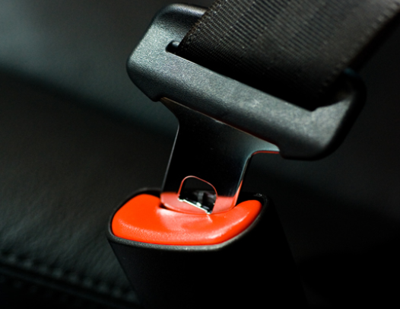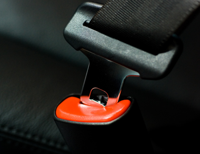
Seatbelt
SAN FRANCISCO - A California jury should've heard that a man possibly wasn't buckled in when he was rear-ended, an appeals court said in striking a multimillion-dollar verdict.
The First Appellate District on Aug. 11 ordered a new trial in the case of Gary Birdsall, who was struck from behind while stopped in a cargo van on the Bay Bridge in 2020. He was awarded $5.2 million by a San Francisco jury last year.
Complicating future proceedings is the existence of an agreement previously struck as reached too late, which would have settled Gary and Pamela Birdsall's claims for only $100,000. That, plus new evidence that Barton Helfet's insurer USAA can use to show Gary wasn't wearing his seatbelt, jeopardizes the jackpot.
"Were Helfet allowed such cross-examination, the jury could have found that a seatbelt would have made a difference, particularly if the jury determined that the driver's seat did not collapse," Justice James Richman wrote.
The collision ocurred on Aug. 3, 2020. Birdsall was stopped for an unknown reason on the Bay Bridge when Helfet rear-ended him going approximately 50 mph, pushing Birdsall's van into another driven by Edgar DeGiovanni.
DeGiovanni left his vehicle to check on Birdsall's, claiming the driver's seat was in place and upright, though this was later contradicted by photographs. Birdsall was lying in the back of the van underneath empty boxes, DeGiovanni said.
A traffic officer determined Birdsall had not been wearing his seatbelt. Photographs showed it was in a stored position on the frame behind the driver's door.
Though it may seem logical to allow defendants to introduce this type of evidence, many states do not allow it. Lawmakers in Georgia stepped in this year to guide courts after massive verdicts, like $1.7 billion against Ford Motor Company, raised red flags.
Alabama attempted last year to remove the seatbelt gag rule but legislation never made it out of committee. Lawmakers in Tennessee and Montana didn't try, while laws in Nebraska and Oregon can only reduce a jury award by a 5% if the plaintiff failed to wear a seatbelt.
In Birdsall's case, San Francisco judge Christopher Hite didn't allow Helfet to tell the jury Birdsall wasn't strapped in, even after admitting that "it's common sense that he may have been less injured if he wore a seat belt."
Hite attempted a compromise that would let jurors know that Birdsall didn't remember whether he was wearing a seatbelt but it was seen in the "stowed position" after the collision. Helfet did not agree to this.
The appeals court looked to four opinions for guidance, three of which were reached before a 1992 law required drivers to wear seatbelts.
In one, an error was found not in allowing the jury to hear the plaintiffs weren't wearing seatbelts but in not providing expert testimony. Another case required testimony on the injuries because it should not have been up to jurors to figure out how much a seatbelt could have mitigated them.
In Birdsall's case, the appeals court found sometimes a jury can rely on seatbelt evidence without the testimony of an expert. Jurors will need to hear evidence now on what caused Birdsall's mild traumatic brain injury and whether it was the result of a restrained driver's head being whipped backwards.
"As plaintiffs' counsel acknowledged in the course of an argument early at trial, a seatbelt stops the head from going forward," Justice Richman wrote. "As plaintiffs' brief puts it, 'a seatbelt is a frontal restraint stopping the occupant from moving forwards not backwards.'
"There was no evidence that the 'impact to the head' was from Gary striking anything in front of him. The jury could have concluded it was when Gary was thrown however many feet into the back of the van."
And jurors wanted to know. They submitted several questions during the trial as to whether Birdsall was wearing a seatbelt.
"A fortiori here in the 2024 trial, where Northern California jurors have since 1992 - for most jurors, their entire adult life - lived with a Vehicle Code section mandating seatbelt use, not to mention the constant admonitions, reminders, slogans and signs telling of the significance of seatbelts," Richman wrote.
"That experience, that common sense was improperly disregarded here."


